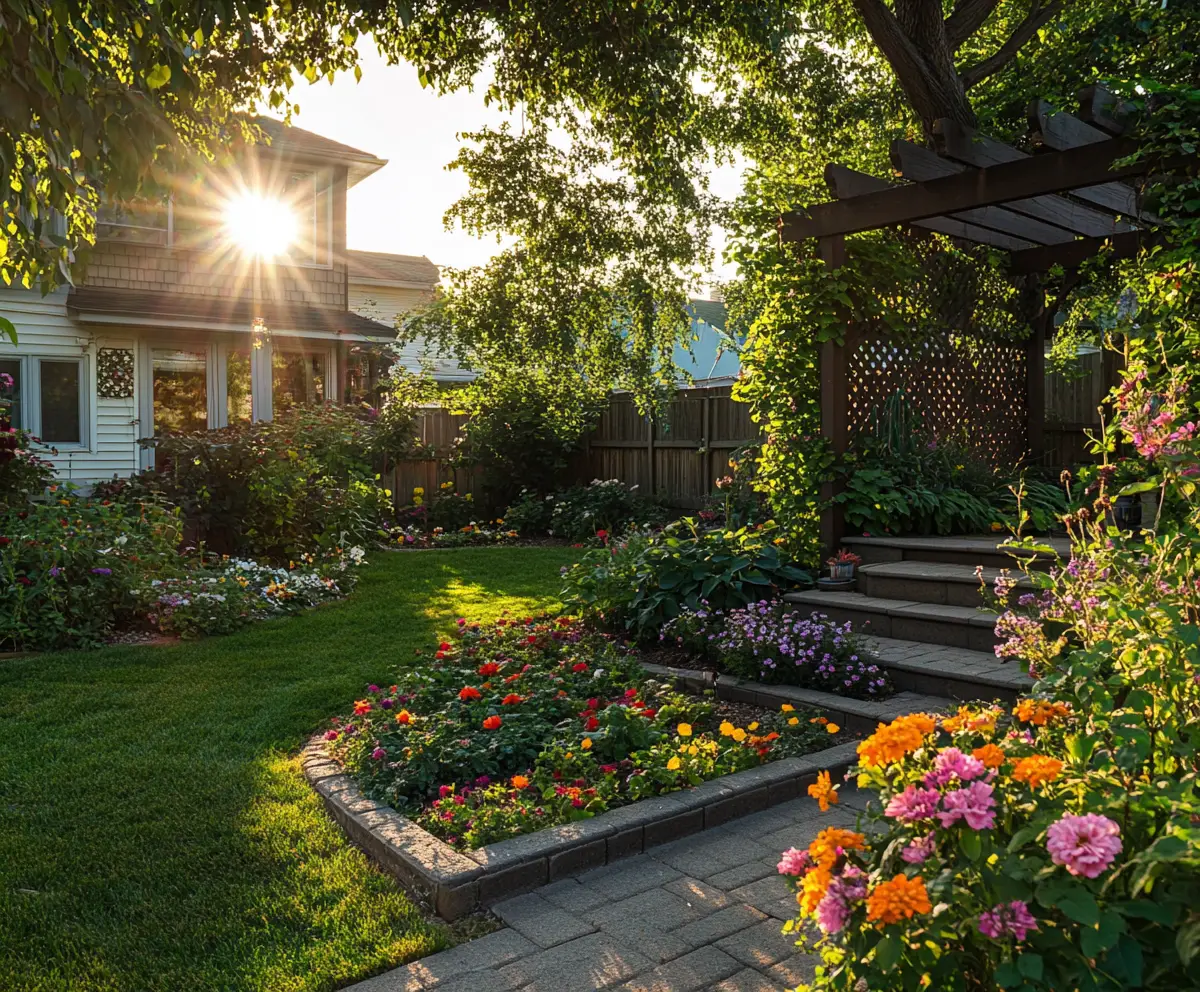First impressions matter—and your front yard is the perfect place to showcase your home’s personality without spending a fortune. With a little creativity and planning, you can transform your outdoor space into a welcoming, eye-catching landscape. Whether you’re looking to enhance your curb appeal or simply freshen things up, there are plenty of cheap front yard landscaping ideas that are simple to implement and easy on your wallet. From DIY flower beds to vertical gardens, these expert-approved tips will help you get the most bang for your buck—while keeping your weekends stress-free and your soil thriving.
1. Build Raised Garden Beds Without Expensive Materials
Raised beds are a classic way to create tidy, healthy garden areas—but they don’t have to cost a fortune. Skip the pricey wooden frames and go for a natural, no-frame look instead. Simply choose a sunny spot in your front yard, remove the sod, and loosen the soil using a spade or garden fork. Next, shape your beds by mounding up the topsoil and digging out simple pathways between them (about 18 inches wide works well).
This DIY method not only gives your landscape a clean, organized look but also improves drainage and soil structure—all without buying lumber or kits. It’s a little more hands-on, but the result is a budget-friendly garden bed that’s both functional and visually appealing.
Pro Tip: Add compost or mulch on top to enrich the soil and reduce weeds, giving your beds a more polished finish.
2. Add Charm with a DIY Trellis or Garden Arbor
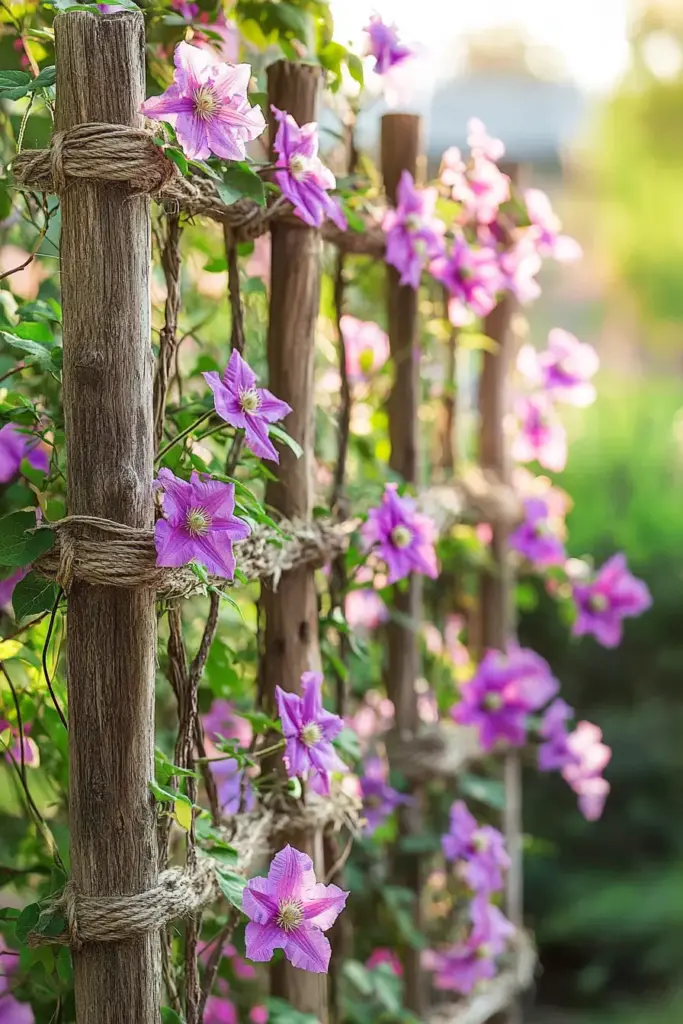
If you’re looking for an affordable way to add height and dimension to your front yard, a trellis or arbor can make a big visual impact—without the big price tag. You can either repurpose one you already have or craft your own using hardwood branches, twine, and a bit of creativity. A conical trellis, for example, can be made in minutes by tying together five or six sturdy branches.
These vertical structures are perfect for supporting climbing plants like clematis, morning glories, or even beans if you’re blending beauty with function. Plus, they draw the eye upward and can create a sense of structure in even the smallest garden spaces.
Budget-Friendly Bonus: Most of the materials you need can be found at your local hardware store—or even in your backyard.
3. Design a Small but Impactful Flower Bed

When it comes to landscaping on a budget, less is often more. Instead of trying to fill your entire front yard with flowers, focus on one or two high-impact areas—like near the walkway, mailbox, or front porch. Small flower beds can make a big visual difference with minimal effort and cost.
Choose low-maintenance perennials that come back year after year, and group them in tight clusters for a more polished and intentional look. This not only creates visual interest but also reduces the need for constant upkeep.
Pro Tip: Use curved bed edges to add a natural flow and soften the overall appearance of your front yard.
4. Start Your Plants From Seed

One of the most budget-friendly and rewarding ways to grow your garden is by starting your plants from seed. While nurseries offer convenience, growing your own flowers or vegetables from scratch gives you more control, a wider variety of options, and serious savings.
All you need are some seed trays, basic potting mix, and a sunny windowsill or grow light. Once your seedlings are ready, transplant them into your garden for a lush, personalized front yard that cost just a fraction of store-bought plants.
Why It Works: Starting from seed allows you to stagger planting times, fill gaps in your beds, and experiment with different varieties—without overspending.
Pro Tip: Look for heirloom or native seed varieties for plants that are both beautiful and resilient in your local climate.
5. Plant Perennial Bulbs for Color That Comes Back
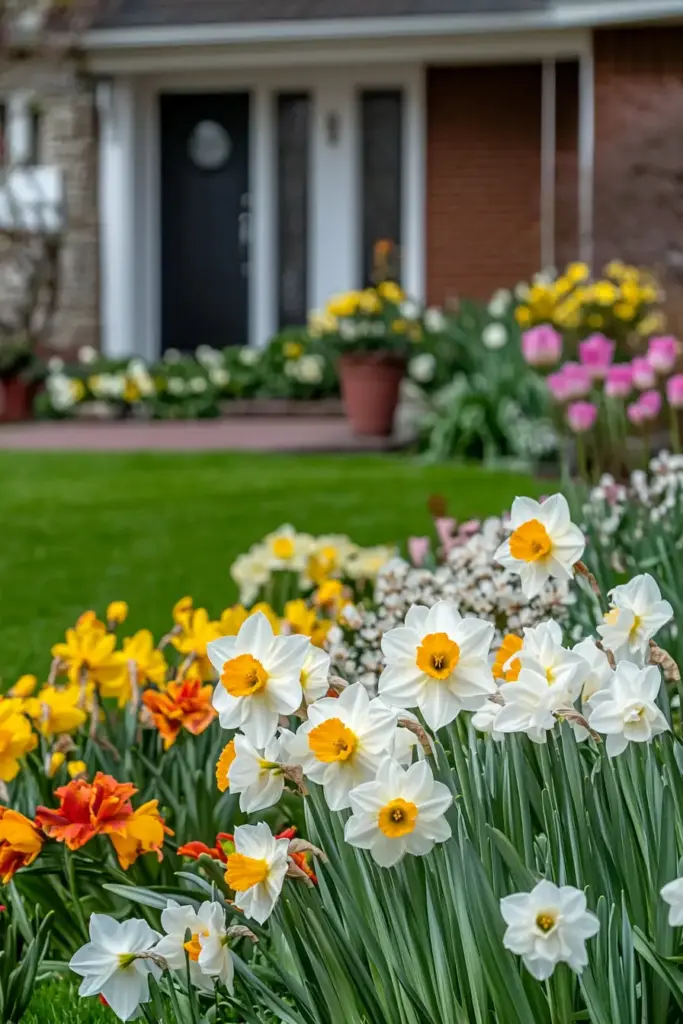
Want your front yard to bloom beautifully year after year without replanting? Perennial bulbs are your best friends. Daffodils, tulips, hyacinths, and crocuses are not only inexpensive but also self-replicating—meaning they’ll naturally spread underground over time.
Plant them in the fall or early spring, depending on your climate, and let nature do the rest. Once established, these bulbs will deliver vibrant color each season with little to no effort.
Low-Maintenance Win: Most perennial bulbs require minimal watering and are pest-resistant, making them ideal for busy gardeners or low-fuss landscapes.
Pro Tip: Cluster bulbs in odd numbers for a more natural, professional look.
6. Grow Native Plants for a Low-Cost, Low-Maintenance Landscape
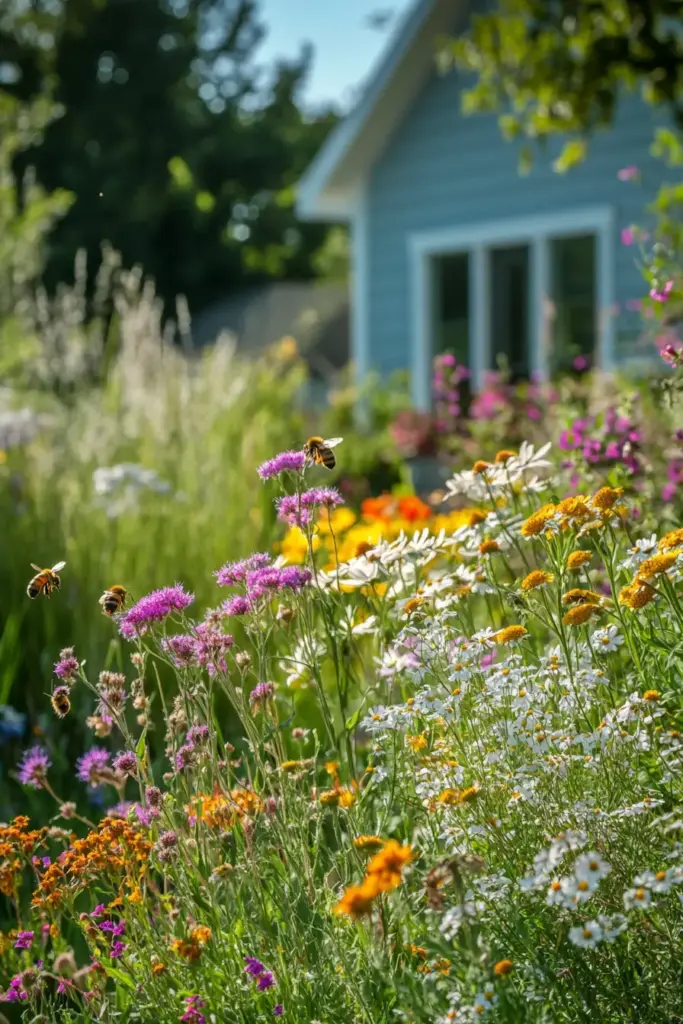
One of the smartest ways to save money (and water) in your front yard is by planting native plants. These are species that naturally thrive in your region’s soil and climate, which means they need far less watering, fertilizing, and attention overall.
Native plants are also great for attracting pollinators like bees, butterflies, and hummingbirds—adding beauty and biodiversity to your yard. Plus, since they’re already adapted to local conditions, they tend to be more resistant to pests and diseases.
Eco-Friendly Bonus: Native landscapes are more sustainable, support local wildlife, and help restore natural habitats.
Pro Tip: Not sure what’s native to your area? Local extension offices or native plant societies are great resources for tailored suggestions.
7. Maximize Space with Vertical Gardening
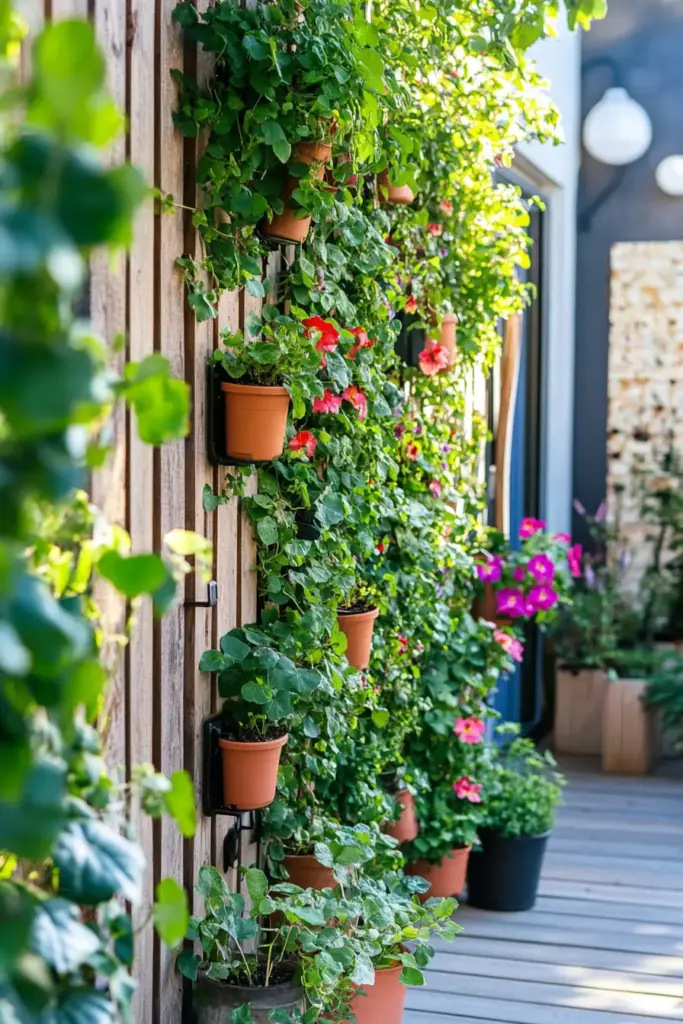
Running low on square footage? No problem. Vertical gardening is a clever and cost-effective landscaping solution that turns walls, fences, or even trellises into lush, green focal points. Whether you’re growing flowering vines, trailing herbs, or edible climbers like pole beans, going vertical lets you add beauty without taking up much ground space.
Not only does this create visual interest and dimension, but it’s also a great way to soften hard surfaces and bring more greenery into compact front yards.
Easy DIY Tip: Reuse wooden pallets, hanging shoe organizers, or repurposed wire racks to build a vertical garden with materials you might already have at home.
Pro Tip: Choose climbing plants suited to your sun exposure—like clematis for sun, or ivy for shadier spots.
8. Use Mulch to Polish Beds and Protect Soil
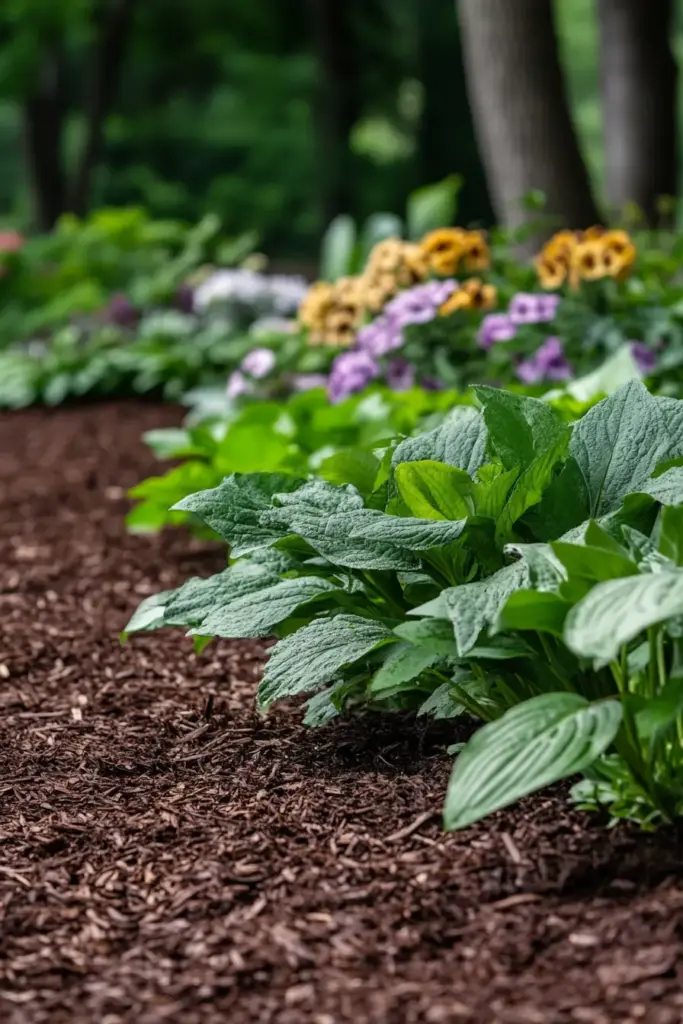
Mulch might just be the unsung hero of budget landscaping. It gives your flower beds a neat, finished look while helping your plants thrive by retaining moisture, suppressing weeds, and regulating soil temperature. And the best part? You can often get it for free.
Many tree service companies offer free wood chips, and you can also use natural materials like shredded leaves, grass clippings, or even pine needles as DIY mulch options.
Budget Bonus: Mulching reduces how often you need to water and weed, saving you time and money in the long run.
Pro Tip: Stick to a 2–3 inch layer, and keep mulch a few inches away from plant stems to prevent rot.
9. Brighten Up with Window Boxes
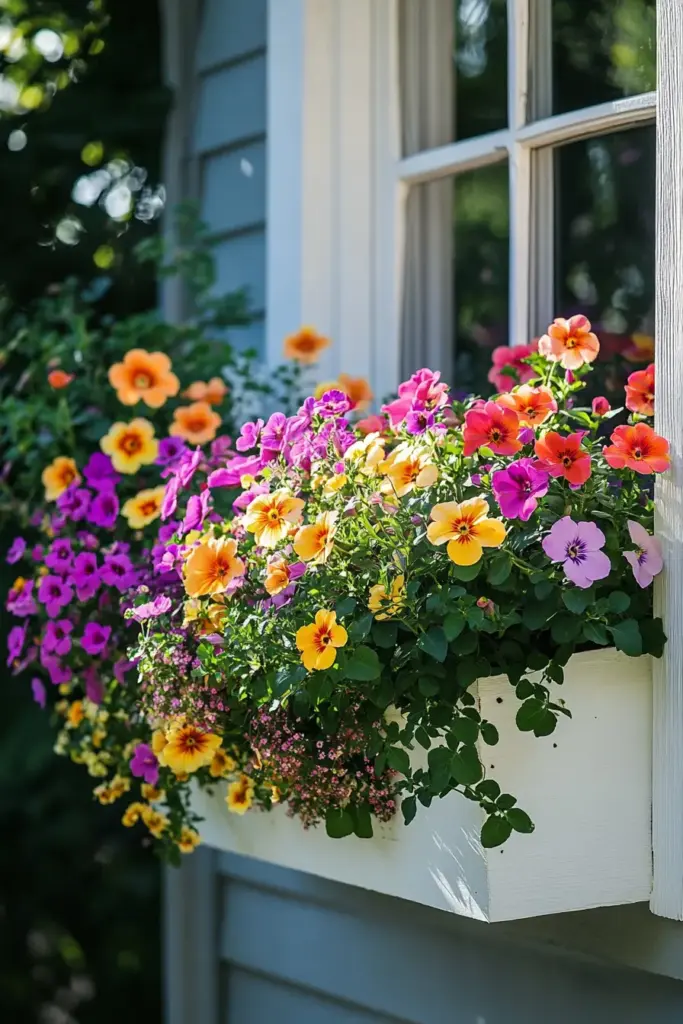
Don’t overlook your windows when landscaping! Window boxes are a fantastic, budget-friendly way to add color and charm to your home’s exterior—especially if you’re short on yard space. These mini gardens draw attention to architectural features and allow you to rotate flowers seasonally for a fresh look year-round.
You can buy pre-made boxes or build your own from leftover wood. Fill them with vibrant annuals, trailing vines, or herbs for both beauty and practicality.
Style Tip: Choose plants with contrasting colors and textures to create eye-catching arrangements, and coordinate them with your home’s exterior palette.
Pro Tip: Install window boxes under front-facing windows or along railings to add vertical interest and curb appeal in an instant.
10. Add a Budget-Friendly Water Feature
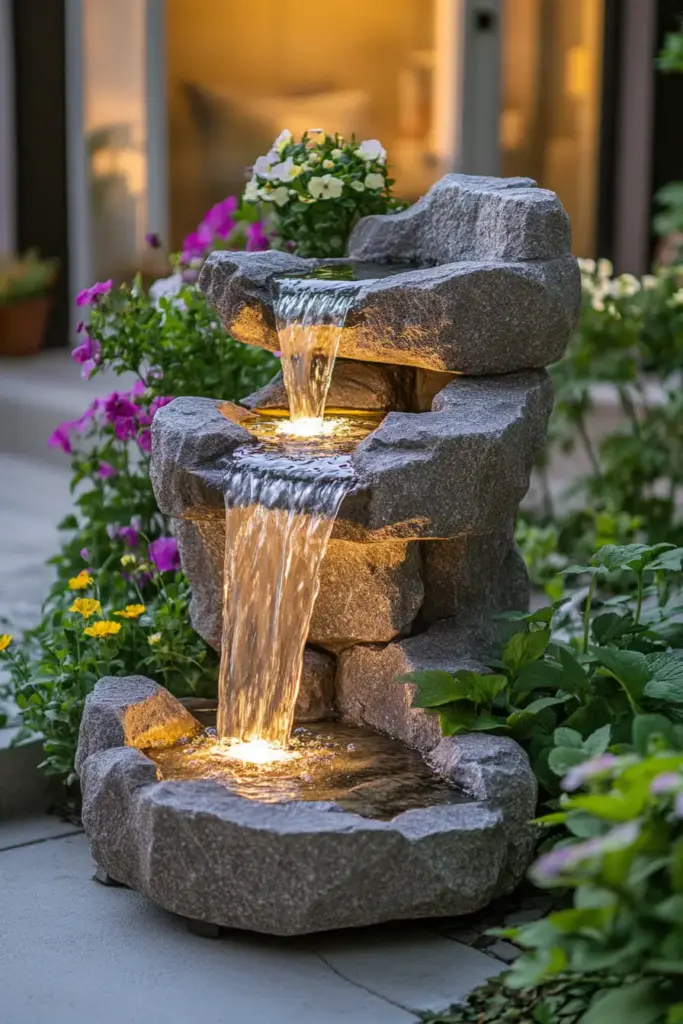
A small water feature can bring a peaceful, spa-like vibe to your front yard—without draining your wallet. Whether it’s a simple bird bath, a DIY bubbling fountain, or a repurposed container with a solar pump, the sound and movement of water instantly elevate your outdoor space.
Water features create a sensory experience, attract birds and beneficial insects, and give your garden a dynamic focal point.
Budget Hack: Use stacked stones, recycled pots, or salvaged materials to build your own custom feature on the cheap.
Pro Tip: Place your water feature near plants or seating areas so it becomes a natural part of your landscape’s flow and experience.
11. Plant Trees for Long-Term Beauty and Shade
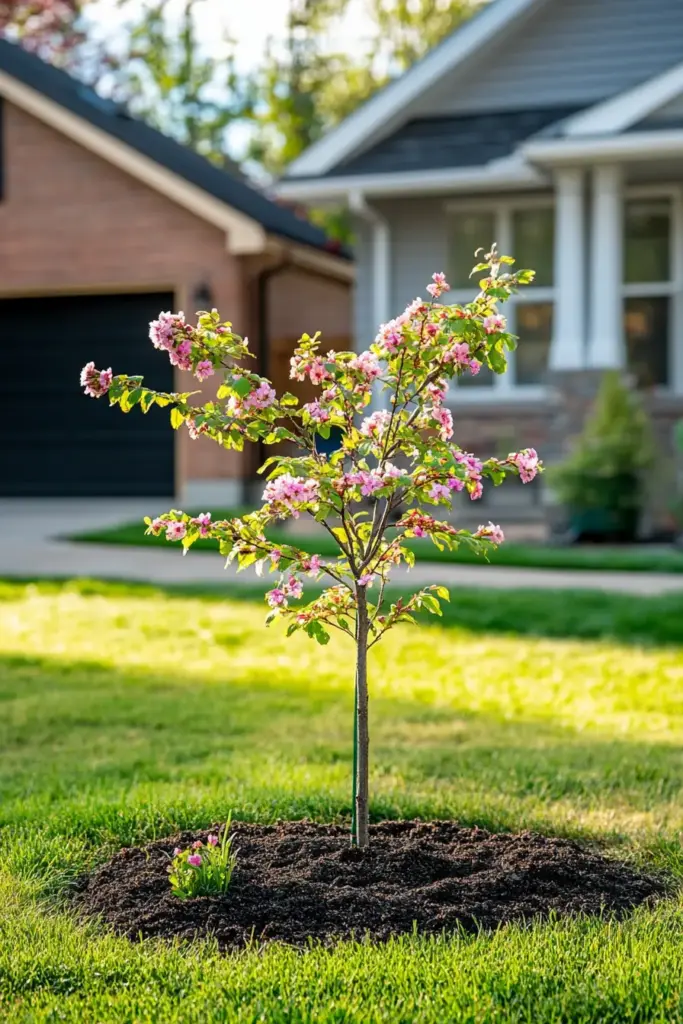
Few landscaping moves offer as much return on investment as planting a tree. Trees add instant structure, curb appeal, and seasonal interest to your front yard—and when planted as saplings or from seed, they’re surprisingly affordable.
Whether you choose a flowering tree for bursts of spring color or a shade tree for energy savings and summer comfort, this one-time effort pays off for decades. Trees also increase property value, attract wildlife, and reduce runoff, making them a win for your wallet and the environment.
Pro Tip: Before planting, consider the tree’s mature size and how it fits into your overall landscape design. Avoid placing large trees too close to your home or walkways.
Final Thoughts: Landscaping That Looks Like a Million Bucks—Without Spending It
Creating a front yard that turns heads doesn’t have to cost a fortune. With a little DIY spirit and strategic planning, these cheap front yard landscaping ideas can help you design a space that’s inviting, stylish, and uniquely yours. Whether you’re planting native flowers, building your own trellis, or adding a touch of water magic, each small improvement brings you closer to a front yard that feels like home.
So roll up your sleeves, grab your gardening gloves, and start transforming your outdoor space—one budget-friendly idea at a time.

